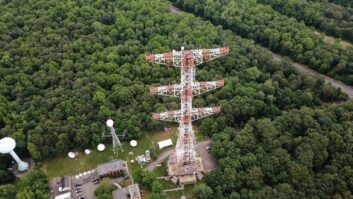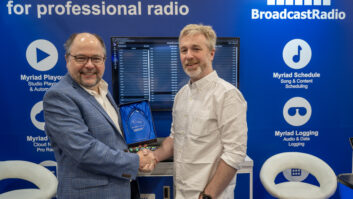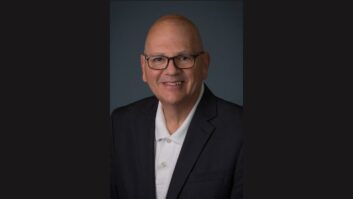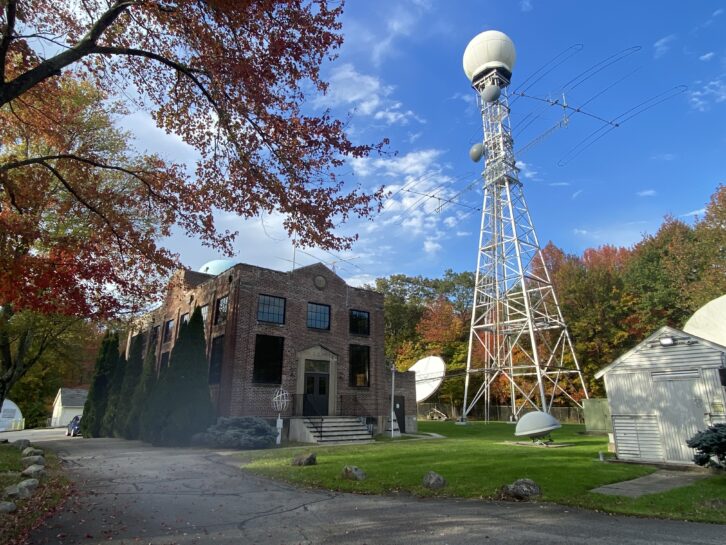
The commemorative Armstrong broadcast station will return next month to 42.8 MHz in the New York City Tri-State area.
On Thursday, June 19, Steve Hemphill and the staff at the historic Alpine Tower in Alpine, N.J., will celebrate with a commemorative broadcast the 20th anniversary of the Armstrong Memorial event, which Hemphill originally organized in 2005 to honor the man who made FM radio possible, Edwin Armstrong.
[Related: “Radio World’s Visit to the Alpine Tower”]
Hemphill credited Alpine Tower owner Chuck Sackermann of CSC Communications, who allowed the first memorial broadcast to be conducted 20 years ago and funded most of the event’s site logistics.
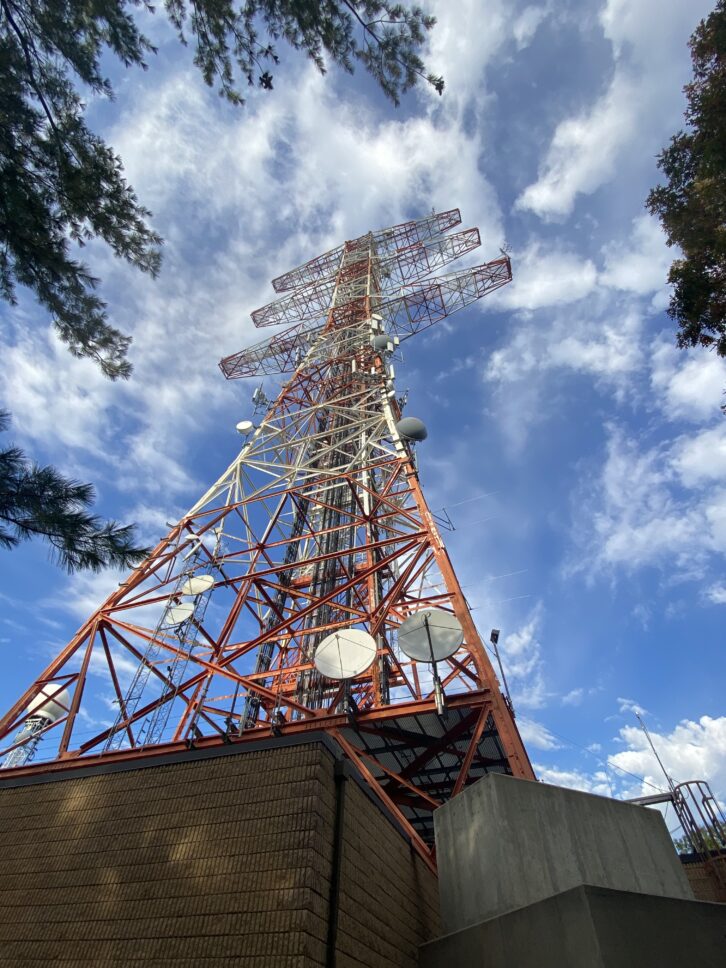
WA2XMN, the Armstrong Memorial broadcast station, will return to the air on June 19 beginning at 12 p.m., broadcast on 42.8 MHz — Armstrong’s original low-band frequency. During previous transmissions, its signal has been heard from as far as 100 miles away. Most police scanners can monitor the VHF low-band, as do software-defined radios.
The tower and original brick transmitter building were finished in 1937 to aid in Armstrong’s FM radio experiments. The call sign is still etched in cement above the front door of Major Armstrong’s original station building on the site today.

The Alpine Tower staff has worked to preserve the history of the site nestled in the Palisades of Bergen County — about 15 miles northwest of the Empire State Building. Fairleigh Dickinson University’s Class B1 89.1 WFDU(FM) transmits from the Alpine. It was also used as an emergency site for several New York City TV and FM stations following the Sept. 11, 2001 attacks.
250 watts through a Phasitron

With hand-built vintage parts, Hemphill said his restored Phasitron transmitter, running 250 watts of power output, will feed into a Ringo vertical antenna mounted on the Alpine Tower at approximately 400 feet above ground level. Transmissions of the experimental station are in wide-band frequency modulation, using the same technical standards as modern FM broadcast stations.
“Although the Phasitron was not even invented yet when Armstrong began his broadcasts, the technology is approximately correct for the era,” Dave Hershberger wrote in his 2004 profile of Hemphill’s reenactment.
Hemphill said he will be broadcasting programming from the 2005 event, which includes their original Armstrong panel discussion and interviews with Major Armstrong’s niece, Jeanne Hammond, and Tom Lewis, author of “Empire of the Air.” He will also be airing David Osman’s production of “Empire of the Air: The Men Who Made Radio,” based on Lewis’ book.

Hemphill added that he is planning a collaboration with Kirk Harnack’s “This Week in Radio Tech” podcast as part of the 42.8 MHz coverage.
He said that plans to stream online coverage of the 42.8 MHz broadcast are still being discussed.
The last time WA2XMN broadcast was in 2015, Hemphill said. A 2018 broadcast to honor Hammond — who had recently passed away — was cancelled due to problems with the station antenna’s transmission line.
The Radio of Club America honored Hemphill with a Special Appreciation Award in 2005 for the 70th anniversary broadcast. A consulting engineer since 1969, he is the founder of Solid Electronics Labs, which manufacturers and sells FM broadcast exciters and stereo generators.
“FM radio has had an enormous impact on my career, and there’s only one man who is truly responsible for giving me the opportunity to use that technology,” Hemphill said of his efforts to preserve the memory of Major Armstrong.
History in the Palisades
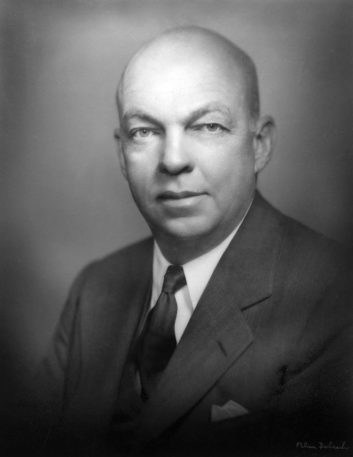
The Armstrong — or Alpine — Tower is the site of the world’s first FM broadcast station, W2XMN, broadcasting primarily on 42.8. It first signed on in 1938 and broadcast until July 1949, when the FCC shifted frequency allocations to 88–108 MHz band we know today.
Hemphill also noted Major Armstrong’s “high-band” FM broadcast station. It signed on in 1945 with the callsign W2XEA on 92.1 MHz. It moved to 93.1 in 1948, with the KE2XCC callsign. That station broadcast until March 1954 when it signed off a month after Armstrong died.
It was 90 years ago when the pioneer who made FM radio possible put forth the first public demonstration of the technology. According to Columbia University — where Armstrong graduated with an electrical engineering degree — he described FM radio and then turned on his receiver in front of the audience during a November 1935 Institute of Radio Engineers conference.
An FM transmission from a friend’s house in Yonkers came in free of static with a fidelity never heard before.
